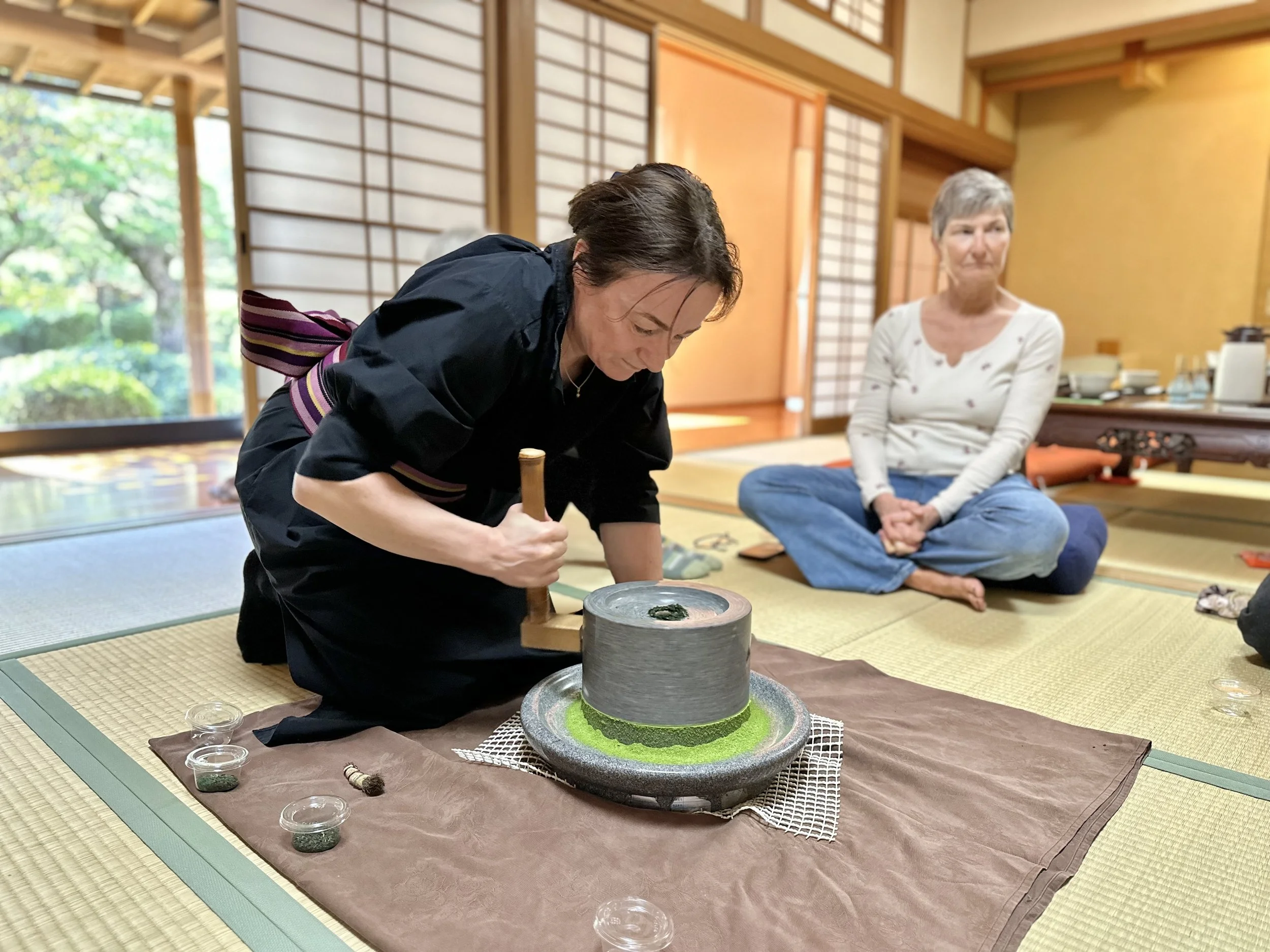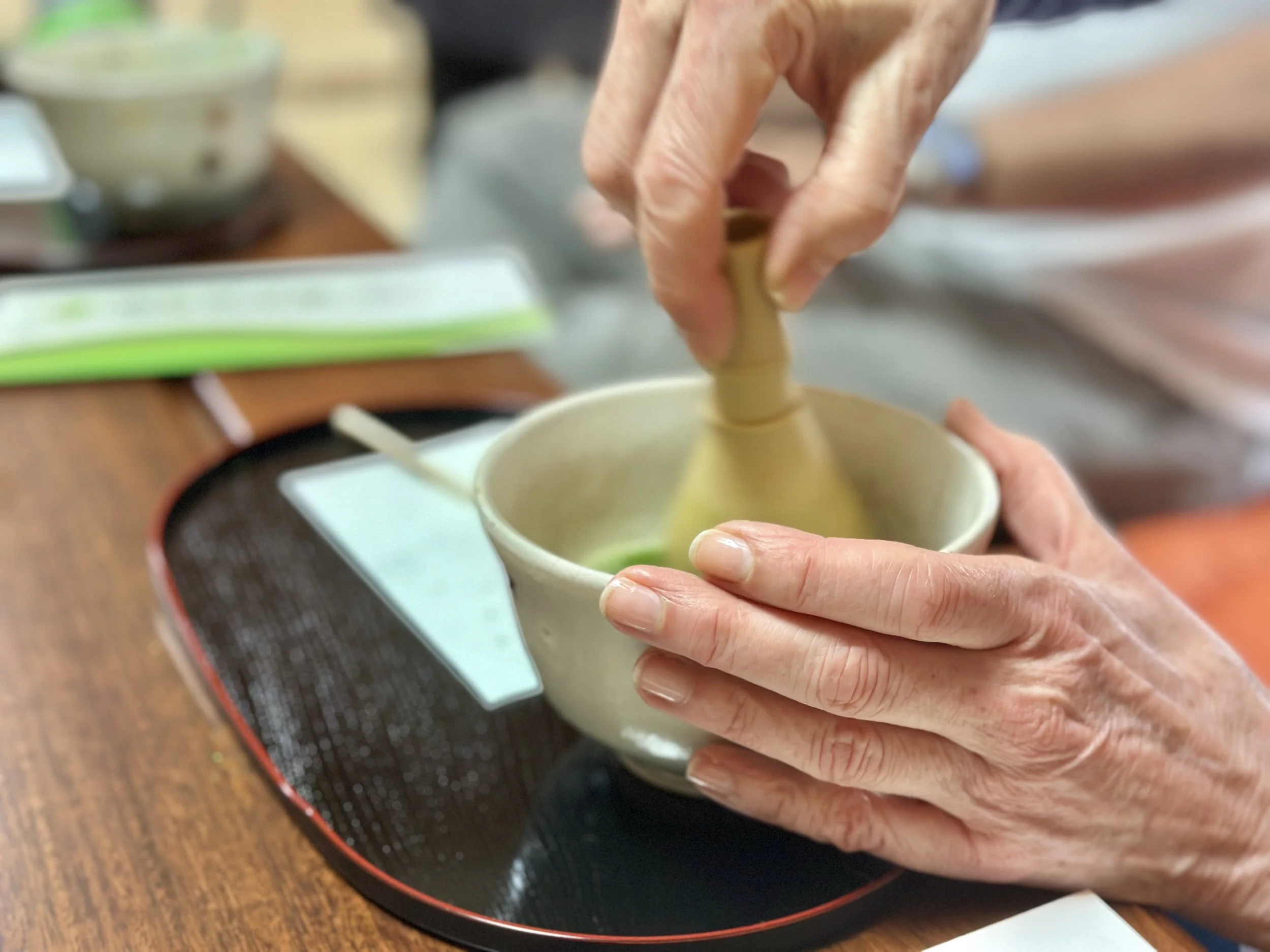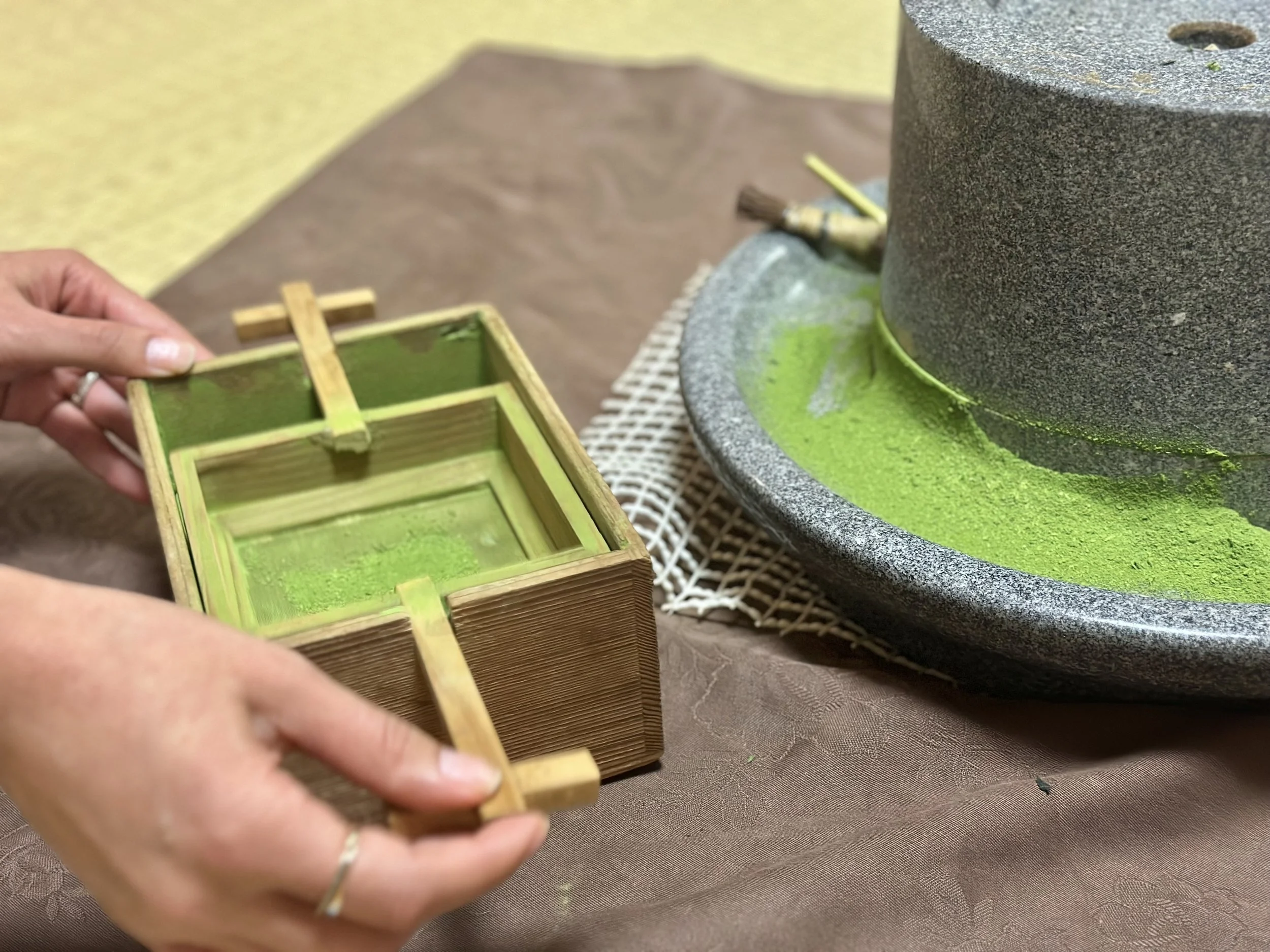Why Can’t We Make Matcha Powder from Loose Leaf Green Tea?
Why Can’t We Make Matcha Powder from Loose Leaf Green Tea?
During our retreat’s tea ceremony workshop, one question that often comes up is:
“Can I just grind regular green tea leaves to make matcha?”
It’s a great question—especially because we actually do try grinding tea leaves as part of the workshop. But the answer is: not quite.
While it may seem like matcha is just powdered green tea, there’s a big difference between matcha and loose-leaf green tea like sencha or bancha.
(Whisking experience in the retreat)
True matcha is made from a specific type of leaf called tencha. Tencha comes from tea plants that have been shade-grown for several weeks before harvest. This shading process boosts the chlorophyll and amino acids, giving matcha its rich green color and smooth, slightly sweet taste.
Loose-leaf green tea, like sencha, is grown in full sunlight and processed differently. It’s steamed, rolled, and dried in a way that’s meant for steeping—not grinding. If you were to grind sencha into a powder, it wouldn’t taste like matcha at all. It would be more bitter, rough in texture, and lacking that delicate, creamy quality we love in matcha.
(We used the traditional stone grinder to make fresh matcha powder in the retreat)
In fact, even tencha can’t be ground just anywhere. True matcha is made using stone mills that grind the dried tencha into an ultra-fine powder—so fine that it feels silky when you touch it. This process is slow and gentle, preserving the flavor and nutrients in the tea.
So while it’s fun to try grinding tea leaves during the retreat, it’s also a hands-on way to appreciate how much care, time, and tradition goes into producing authentic matcha. It’s not just about the powder—it’s about everything that happens before that.




